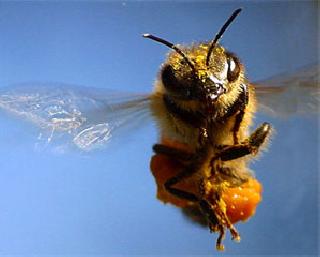
A file photo.
MELBOURNE (PTI): Inspired by how honeybees can land anywhere with utmost precision, scientists, including one of Indian-origin, are designing a cheaper, lighter robot aircraft that can land safely on surfaces of any orientation.
By sensing how rapidly their destination "zooms in" as they fly towards it, honeybees can control their flight speed in time for a perfect touchdown without needing to know how fast they are flying or how far away the destination is.
"This discovery may advance the design of cheaper, lighter robot aircraft that only need a video camera to land safely on surfaces of any orientation," said Professor Mandyam Srinivasan of The Vision Centre (VC) and The University of Queensland Brain Research Institute.
"Orchestrating a safe landing is one of the greatest challenges for flying animals and airborne vehicles," said Srinivasan.
"To achieve a smooth landing, it's essential to slow down in time for the speed to be close to zero at the time of touchdown," he said.
Humans can find out their distance from an object using stereo-vision because their two eyes, which are separated by about 65 mm, capture different views of the object. However, insects can't do the same thing because they have close-set eyes, Srinivasan said.
"So in order to land on the ground, they use their eyes to sense the speed of the image of the ground beneath them," he said.
"By keeping the speed of this image constant, they slow down automatically as they approach the ground, stopping just in time for touchdown," he said.
Researchers trained honeybees to land on discs that were placed vertically, and filmed them using high speed video cameras.
"The boards carried spiral patterns that could be rotated at various speeds by a motor," said Srinivasan.
"When we spun the spiral to make it appear to expand, the bees 'hit the brakes' because they thought they were approaching the board much faster than they really were.
"When we spun the spiral the other way to make it appear to contract, the bees sped up, sometimes crashing into the disc. This shows that landing bees keep track of how rapidly the image 'zooms in', and they adjust their flight speed to keep this 'zooming rate' constant," he said.
 Next Article
Next Article













The Indian Air Force, in its flight trials evaluation report submitted before the Defence Ministry l..
view articleAn insight into the Medium Multi-Role Combat Aircraft competition...
view articleSky enthusiasts can now spot the International Space Station (ISS) commanded by Indian-American astr..
view article